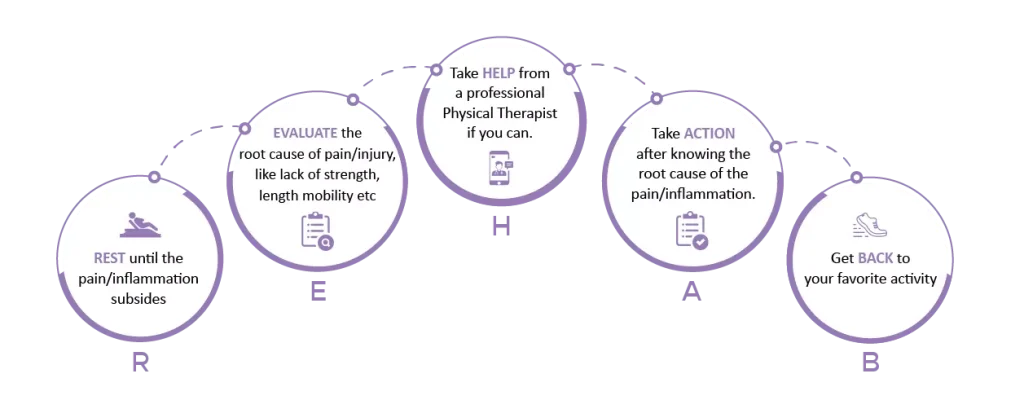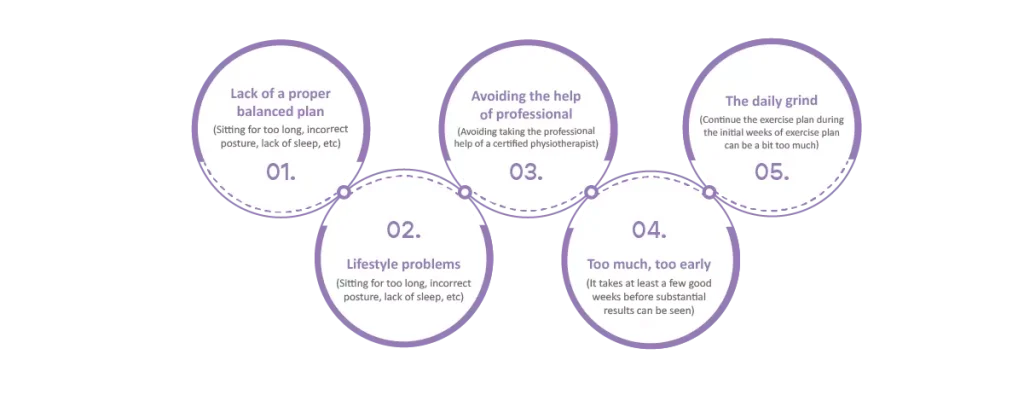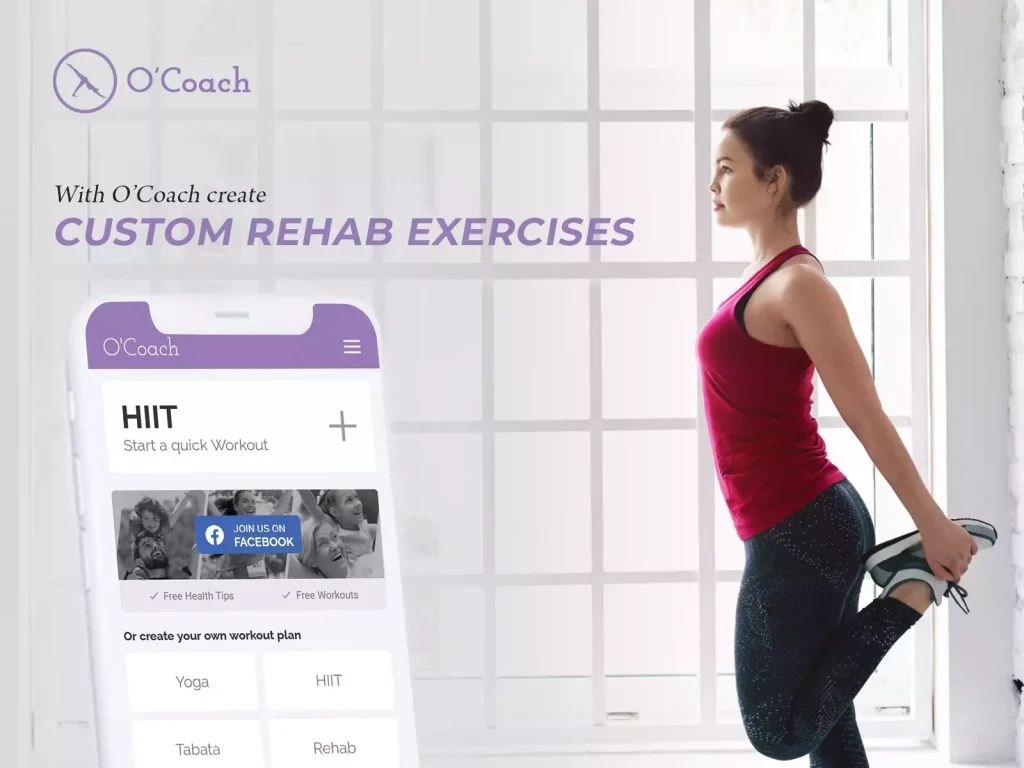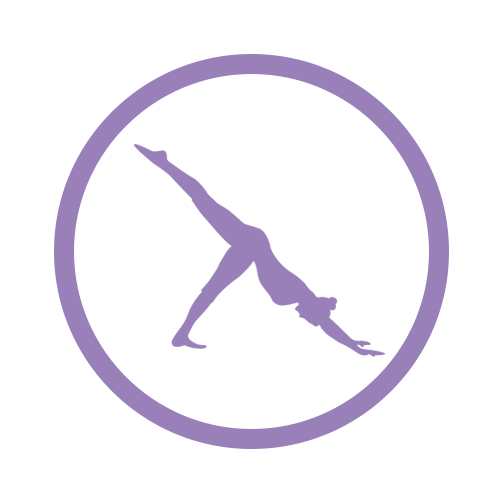Why do we keep suffering from repeated injuries and pains until they become chronic?
The basic science of injury and rehabilitation that everybody misses
I injured my left knee during my marathon training 5 years ago and it still keeps flaring up.
My back if weak. I first felt pain during dead-lifts and now it has turned to chronic pain.
Every time I do push-ups, or try to increase the intensity of my workouts, my wrists start paining.
If you can relate to any such scenario, where your pain keeps flaring up every-time you go back to your activities, you are probably caught up in the dreaded injury-rest-weakness downward spiral!
Injury Rehabilitation Spiral
What is the injury-rest-weakness downward spiral that is affecting your injury rehabilitation?
• Most sports injuries occur due to overload or over-training.
(Over-load/training is simply putting your body the load/training that the body isn’t ready to bear)
• And at one point, we realize, and very correctly so, that if we keep loading or training our bodies at the same intensities, that it is unable to bear, then the only result would be the injury getting worse.
• So, comes the REST, and very rightly so! If everything is being done right, then with proper rest, the injury/pain goes away and we feel ready to get back to action.

• But here comes the dreaded part. This time, the pain again comes up with an even lesser load than before.
This happened because though the extended rest period helped in resolving the previous injury by letting the muscles/tissues/bones repair themselves and recover, it also left them in a state weaker than what they were. So now though you are recovered from the previous injury, you are unfortunately more primed than before for the repeat injury by going back to the same activity levels!
• If you are still reading this, then here comes the important missing part!
Post the rest period of letting your body recover and resolve pain, it is important to assess the underlying muscle weakness, imbalance etc and work on improving it in isolation before going back to the same activity at the previous intensity!
So, essential strengthening/stretching etc is the key post your rest periods to properly recover from the injury/pain and go back to your favorite activity.
How to break the injury-rest-weakness downward spiral?
By following the 5-step REHAB pyramid:

R
Rest until the pain is resolved. Start by following the usual process of RICE – Rest, Ice, Compression and Elevation.
E
Evaluate what caused the injury/pain in the first place. Lack of sufficient muscle strength or endurance build-up, lack of flexibility, lack of mobility etc? If required, always take a few consultations with a physical therapist specialist.
H
Take Help from a professional Physical Therapist if you can.
A
Take action to resolve the identified issues with strength, flexibility, mobility etc. Follow a proper progressive overload exercise routine with due research and professional medical consultation if required.
B
Get back to your favorite activity gradually.
Top 5 reasons why people don’t get results during their injury rehabilitation process
Despite the increasing availability of professional physiotherapist support and guidance around us. An alarming number of people fail in their injury/pain rehab process, leading to chronic pain and eventually unnecessary surgical interventions.

1. Lack of a balanced plan
Of course, not following a properly balanced plan as outlined above. On one side, most athletes avoid the REST stage due to competitiveness and others, non-athletes simply stop the activities and hence making their injury or muscle weakness/imbalance chronic in nature.
2. Avoiding professional help
Avoiding taking the professional help of a certified physiotherapist and indulging in tons of bro-science.
3. Lifestyle problems
Poor lifestyle choices – sitting for too long, incorrect posture, lack of sleep, poor diet, etc. leads to recurring pains and injuries. So even with Rest and Corrective Physical Rehab exercises, unless the lifestyle is improved, the injury/pain will recur.
4. Too much, too early
It takes a certain mindset to understand and accept that it will take time. Yes, it will take time. For most injuries, if handled properly, it takes at least a few good weeks with any physical rehab plan before substantial results can be seen.
5. The daily grind – Generally, the biggest challenge for us majority of non-athletes
Despite having a proper plan, not following it through. Because let’s admit, for a non-athlete having other priorities like their daily profession and family, finding time, motivation and discipline to bear the pain and continue with the exercise plan can be a bit too much. That too, when most rehab exercise plans require you to do few times every day.
Achieve your sports/general goals and get back to your favorite activities!
Though there is nothing substituting the requirement of getting professional assistance from a Certified Physical Therapist. But the O’Coach app can help you in fighting the usual grind and execute your rehab plan efficiently by:
- Letting you create and execute your professionally advised custom injury rehab workout using the app with a special focus on essential aspects like repetition time, time under tension etc.
- You can add reminder schedules for your rehab exercises based on your convenience and requirements.
- You can create a small community with your physiotherapist and supporting family members to keep you motivated and ensure progress during the difficult phases of injury rehab.

Try creating your custom rehab routine for free with the help of the O’Coach app.
Most common injuries for amateur young athletes, joggers, busy professionals, etc are ideal candidates for a non-surgical physical rehab plan!
- Knee injury from jogging/running – ACL/PCL strain, Chondromalacia (Runners’s knee), Patellafemoral Pain Syndrome (Jumpers knee),
- Lower back injury from jogging/running
- Lower back injury from weight training in the gym
- Rotator cuff injury from weight training in the gym
- Cervical pain due to bad posture
References:
- Himmat Dhillon, Sidak Dhilllon,and Mandeep S Dhillon. (2017) Current Concepts in Sports Injury Rehabilitation Indian J Orthop. Sep-Oct; 51(5): 529–536.
- Boyd Crockett, (2011) MD. Rehabilitation of the Athlete Mo Med. May-Jun; 108(3): 173–175.
- Timpka, T., Jacobsson, J., Bickenbach, J., Finch, C. F., Ekberg, J., and Nordenfelt, L. (2014). What is a sports injury? Sports Med. 44, 423–428.


